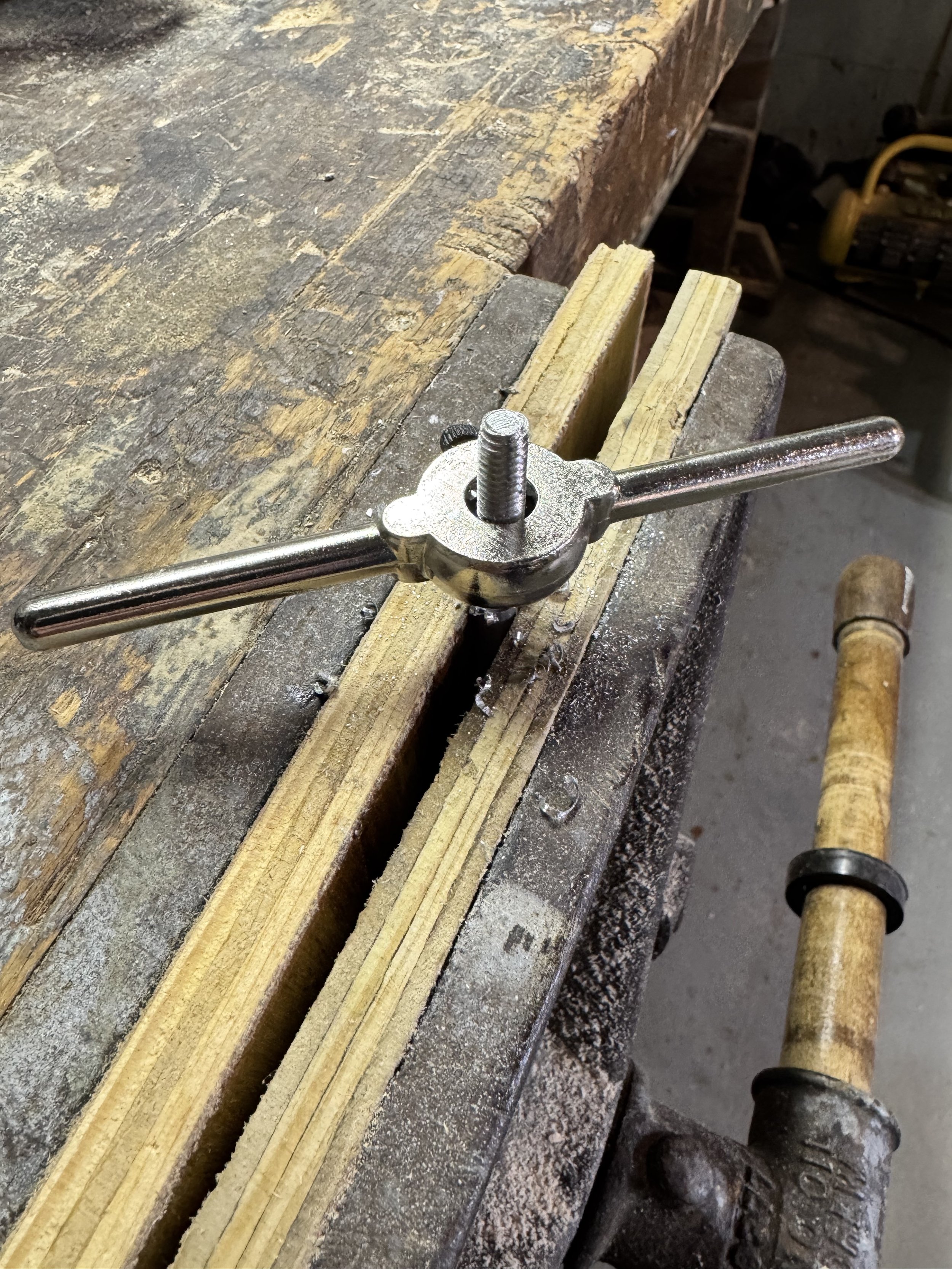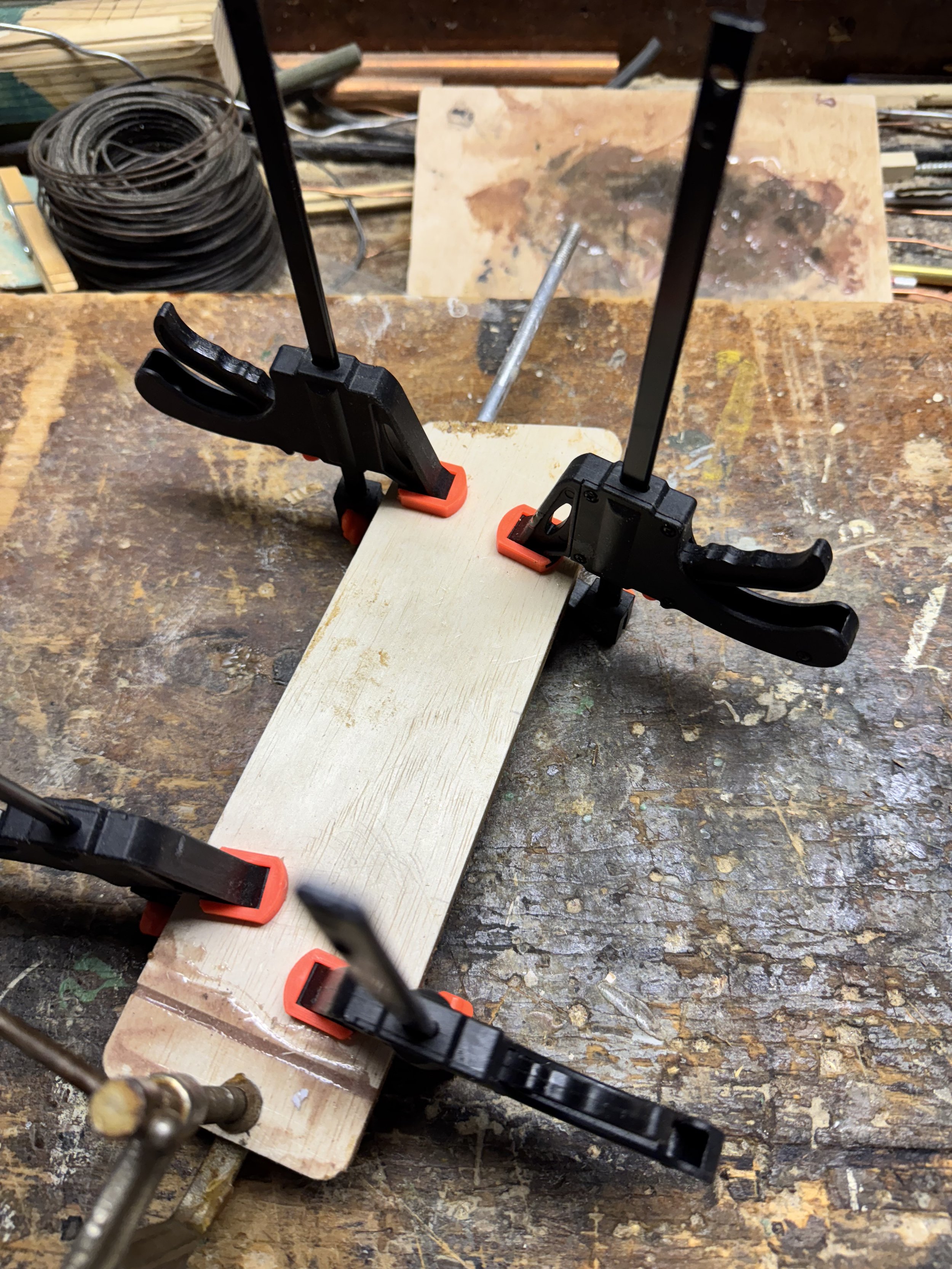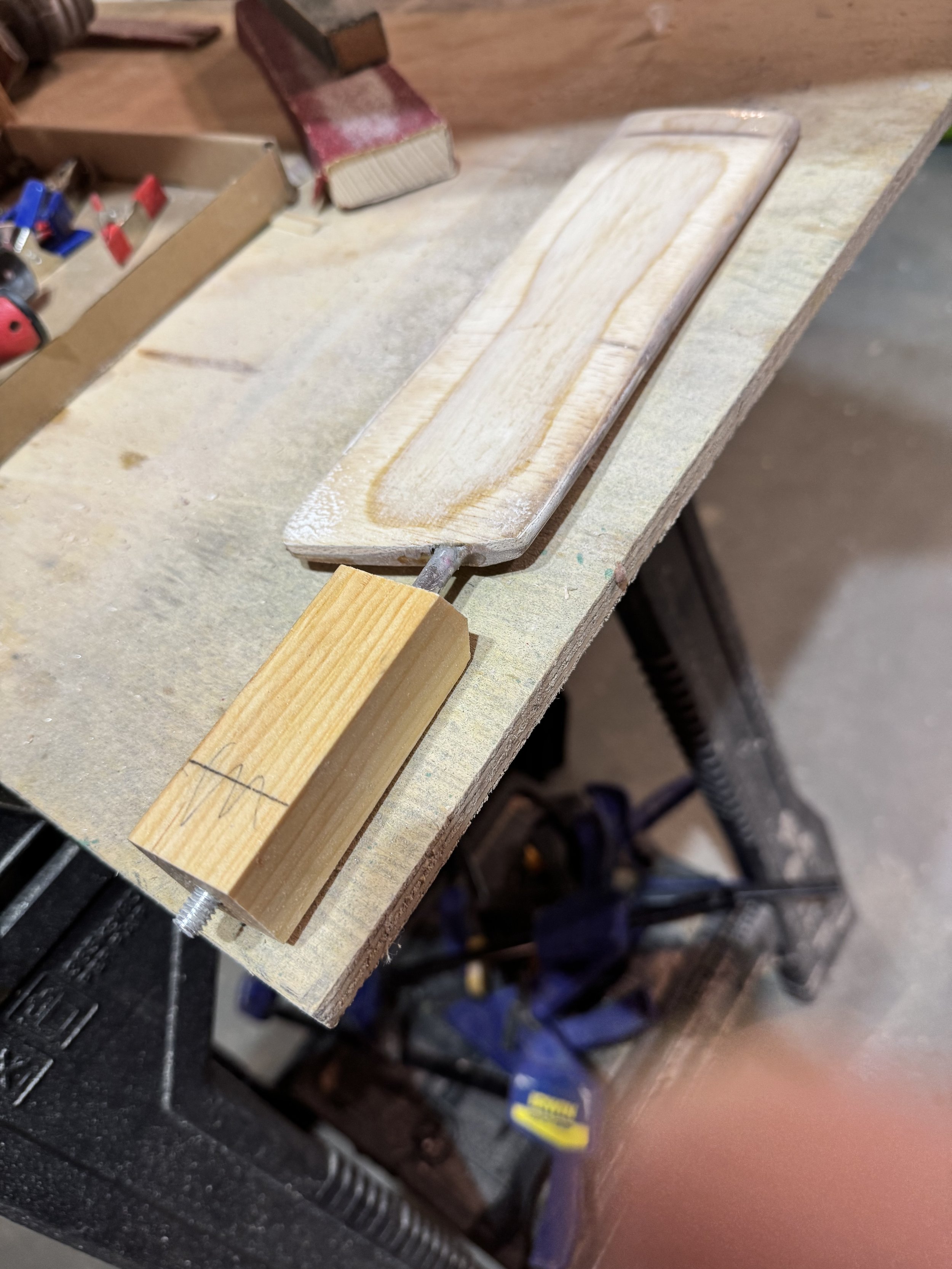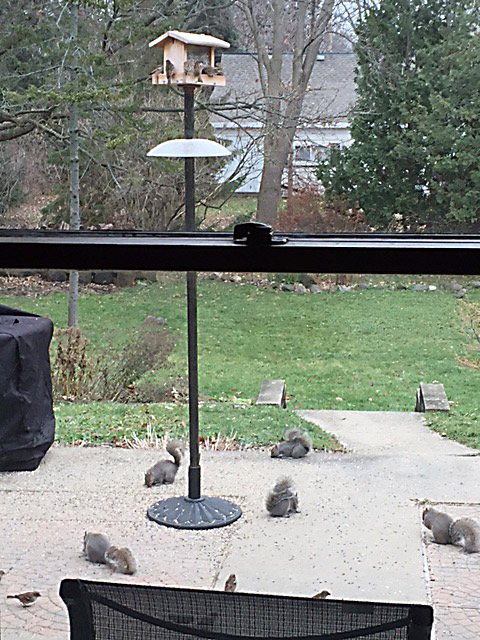Real Winter…
…in Minocqua, and to a slightly lesser extent, here. Quite a bit of snow, and deep cold.
…in Minocqua, and to a slightly lesser extent, here. Quite a bit of snow, and deep cold.


No wind. Sitting by the breezeway fireplace watching snow come straight down, and accumulate.



…sunning itself quite close to the gang of squirrels under the bird feeder.

All curled up when I first spotted it, i mistook it for a big dead squirrel.
Quite a process, possibly done sufficiently well. The proof will be in the sailing








Rudder post mount dry fit
…Wisconsin fish fry. Strangely enough at Paddy’s Irish Pub. Best fish for miles around.

Place jammed, but we found a quiet corner at the back bar, and all was perfect.
…and game night.

…of the mighty Amaryllis.

… on the old standard bike, not the e-bike—still too much salt lying about.

Much more fun than a stationary gym bike.
2025, on Lake Winnebago

Giant sheet of clear thick ice. Trucks driving all over. We were able to drive right out to the windward mark.
In the video below Bri is rounding the windward mark in first place on leg one of the sixth race.
…all day. And the nights are worse. Feeder constantly filled with high energy food.


Not watertight, but heading that way.
Today, January 20, is the eve of St. Agnes. That’s the important occurrence today; forget about anything else, (except MLK, of course).
The Eve Of St. Agnes is also the amazing, 42 stanza poem by John Keats that deserves an annual reading. A tale of star-crossed lovers…but with a happy ending. Perhaps the most luxuriant use of words and images in all of English literature.
”St. Agnes' Eve—Ah, bitter chill it was!
The owl, for all his feathers, was a-cold;
The hare limp'd trembling through the frozen grass,
And silent was the flock in woolly fold…”

Brutal cold. Filling the bird feeder a chore; walk around the block decidedly unpleasant. I marvel at how the wildlife can bear it, can survive.

…to the rather nice place in East Troy.


Also found a little time to work on the boat, mostly shaping the aluminum keel, which is now ready (although I’m not) for the cast lead bulb.

Along with…

…three refills of the bird feeder, and boat work; lots of setbacks, but some progress noticeable.
…was the right tool for dealing with this morning’s “snow.”

Dry, but cold, with polar vortex extreme cold on the way.

Maybe…but still a long, long way to go. Fortunately.
But with lots of little mistakes. Still, sandpaper can cure most ills.

…including an eight-by-twenty inch plate of 3/16 aluminum to be fashioned into the fin keel of the model schooner under construction. Talking about the old, immense, builder’s supply in Palmyra known as Pal Steel. Even the manager admits that he has no idea what’s in the store, but knows he has it.





The aluminum plate is visible at the top of this photo
As in the NYT article The Man who Knew Too Little, I continue to work on my news/politics blockade. After all, what’s the point of stewing in all the depressing national and international news when you can do nothing about it? Better, I think, to think of other things and to do what little you can, where you can.
Along with poetry, model boat building provides plenty of food for thought: what materials, tools, techniques, procedures, and sequences are needed, and what’s the plan for when mistakes are made? In other words, what are you going to do next and how are you going to do it, and how do you recover when you do it wrong?
Just thinking about all this leaves little room for any negative crap.

…during which time the basic design (the morphology) of tree squirrels has remained unchanged. That’s because the design works so well that there is no need for evolution to change it.
Squirrels have ankles that rotate 180 degrees, allowing them to climb downward. Their tails provide both shade and cooling as well as insulation and protection from cold. And although they fall more often than we think, they always flip right side up, assume a glide posture, usually land softly, and are almost never injured.
And that ain’t the half of it.

…is the name of the book I’m reading.

Yesterday we had fourteen under the feeder. While they seem to be a worthwhile subject of study, the study here up to now has been haphazard. It will be fun to read how the pros do it. I expect tagging, tracking, shooting, and autopsies.